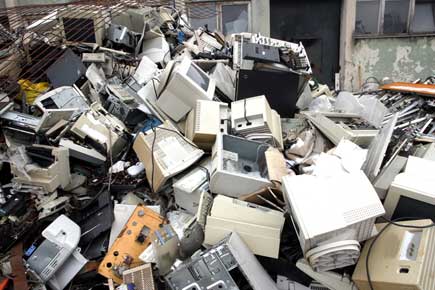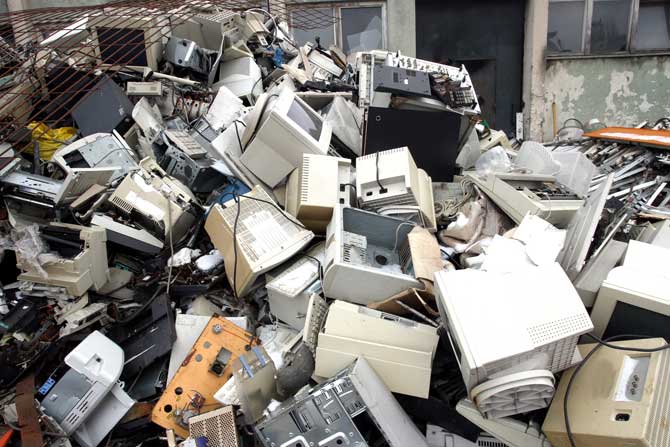India, the fifth largest producer of e-waste, is likely to generate 52 lakh metric tonnes of electronic waste by 2020 from the current level of 18 lakh metric tonnes, according to a study. India's e-waste is growing at 30 per cent per annum, an Assocham-cKinetics study said

India, the fifth largest producer of e-waste, is likely to generate 52 lakh metric tonnes of electronic waste by 2020 from the current level of 18 lakh metric tonnes, according to a study. India's e-waste is growing at 30 per cent per annum, an Assocham-cKinetics study said.
ADVERTISEMENT
 Representational Pic
Representational Pic
The global volume of e-waste generated is expected to reach 130 million tonnes (MT) in 2018 from 93.5 MT in 2016 at a compound annual growth rate of 17.6 per cent from 2016 to 2018, it said.
"As Indians become richer and spend more on electronic items and appliances, computer equipment accounts for almost 70 per cent of e-waste material followed by telecommunication equipment (12per cent), electrical equipment (8per cent) and medical equipment (7 per cent)," the study said.
Other equipment, including household e-waste account for the remaining 4 per cent, it added. It noted that only 1.5 per cent of country's total e-waste gets recycled due to poor infrastructure, legislation and framework.
"Over 95 per cent of e-waste generated is managed by the unorganised sector and scrap dealers in this market," the study said.
E-waste typically includes discarded computer monitors, motherboards, cathode ray tubes (CRT), printed circuit board (PCB), mobile phones and chargers, compact discs, headphones, white goods such as liquid crystal displays/plasma televisions, air conditioners, refrigerators and so on.
It observed that computers, televisions and mobile phones are most dangerous because they have high levels of lead, mercury and cadmium and are discarded more since they have short life-spans. The study revealed that the main sources of electronic waste in India are the government, public and private (industrial) sectors, which account for almost 75 per cent of total waste generation.
The contribution of individual households is relatively small at about 16 per cent, the rest being contributed by manufacturers.
Though individual households are not large contributors to waste generated by computers, they consume large quantities of consumer durables and are, therefore, potential creators of waste, it said.
"E-waste accounts for approximately 40 per cent of the lead and 70 per cent of heavy metals found in landfills. These pollutants lead to ground water and air pollution and soil acidification."
High and prolonged exposure to these chemicals or pollutants emitted during unsafe e-waste recycling leads to damage of nervous systems, blood systems, kidneys and brain development, respiratory disorders, skin disorders, lung
cancer, bronchitis, heart, liver, and spleen damage, it said.
It noted that about two-thirds of e-waste workers in India are suffering from respiratory ailments like breathing difficulties, irritation, coughing and choking.
 Subscribe today by clicking the link and stay updated with the latest news!" Click here!
Subscribe today by clicking the link and stay updated with the latest news!" Click here!






